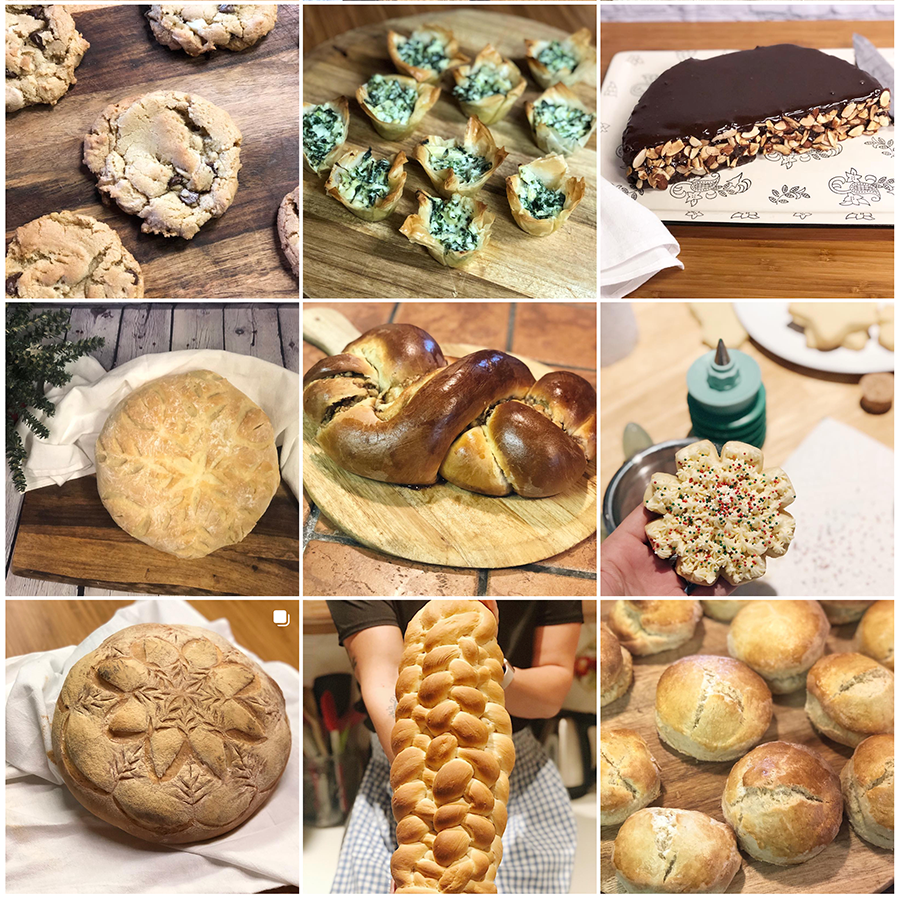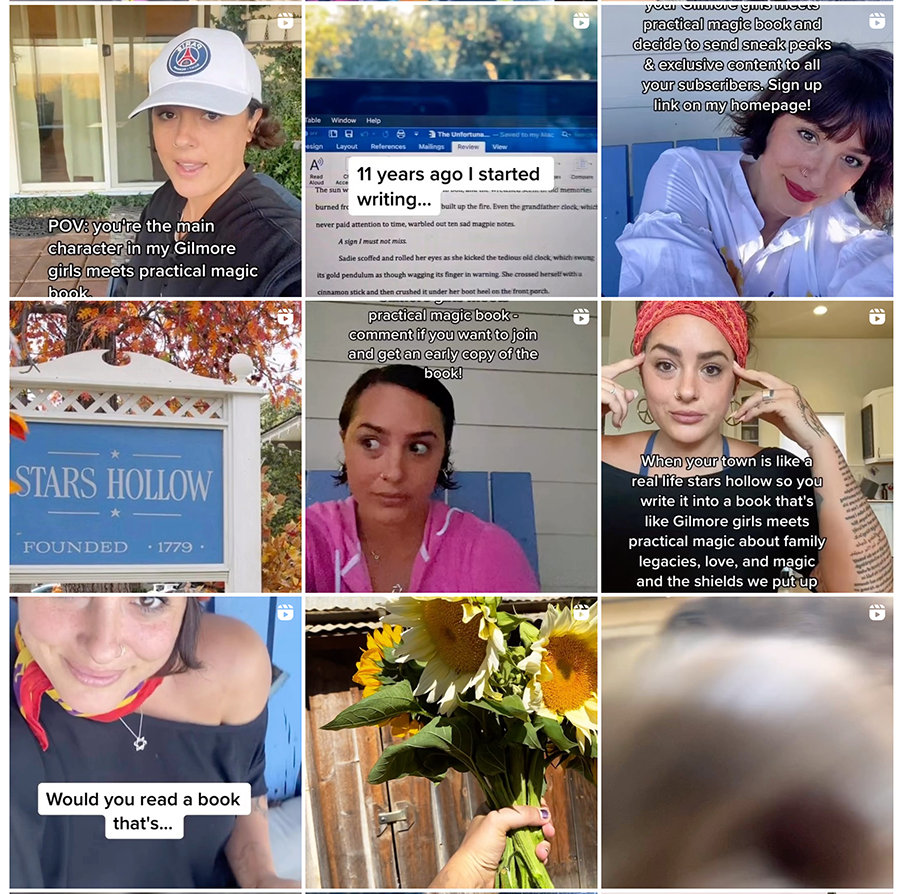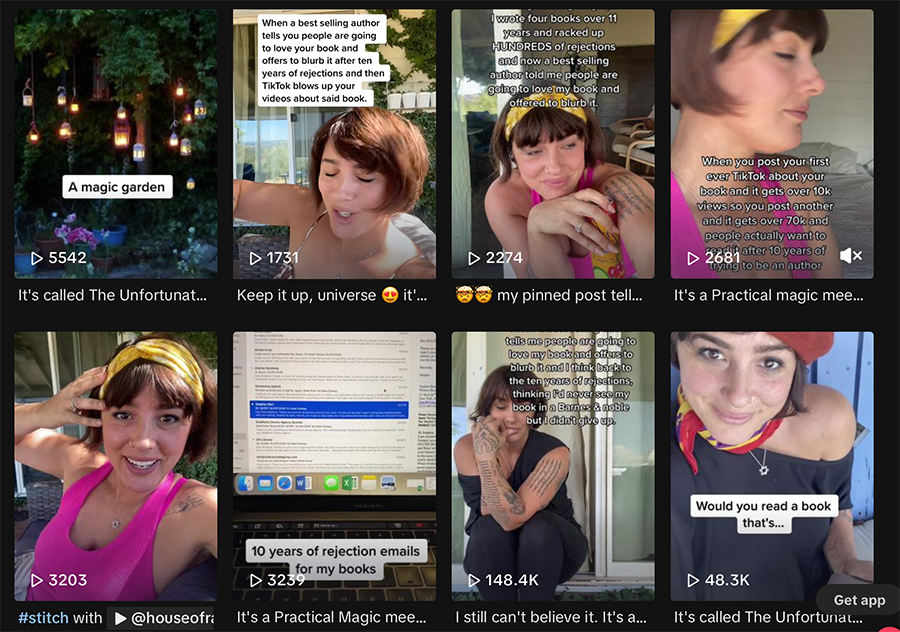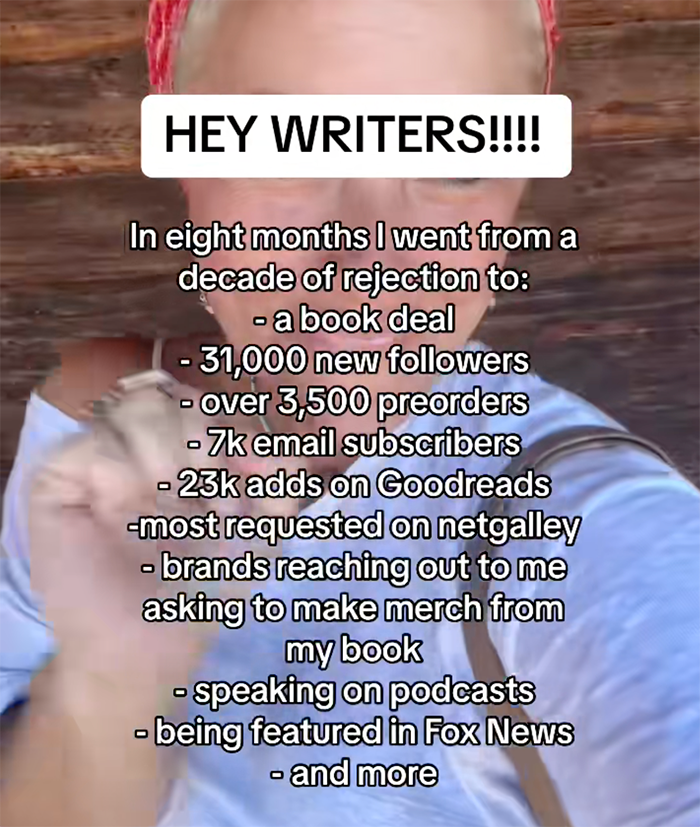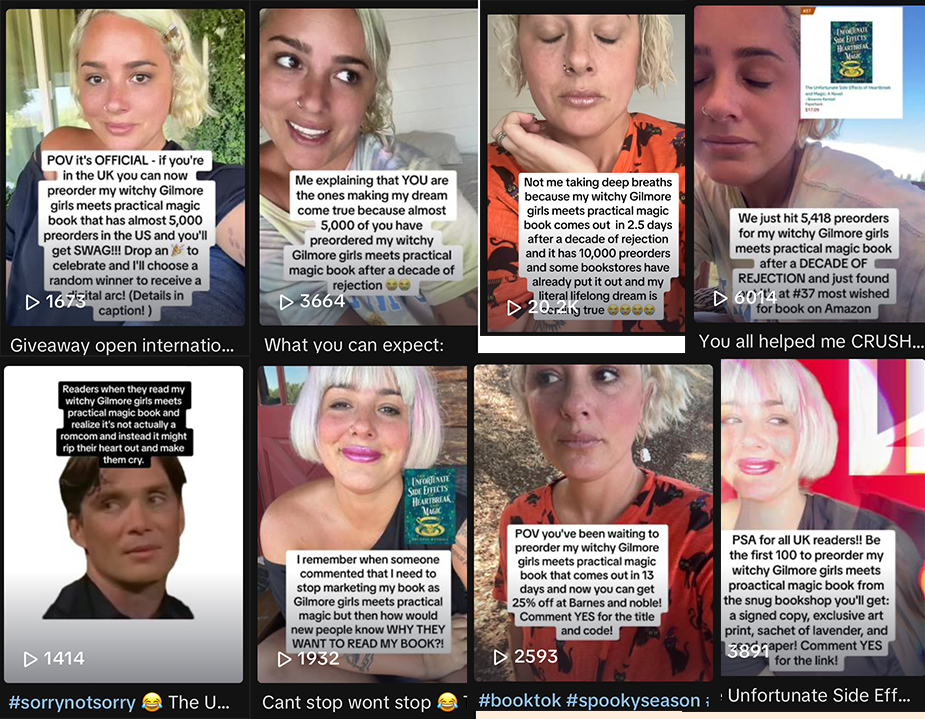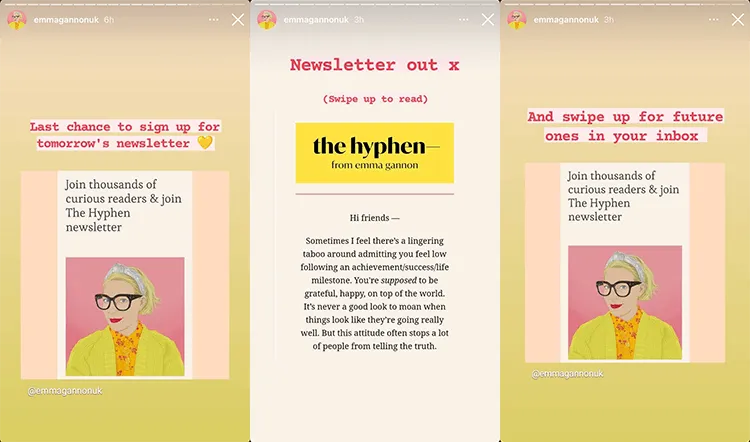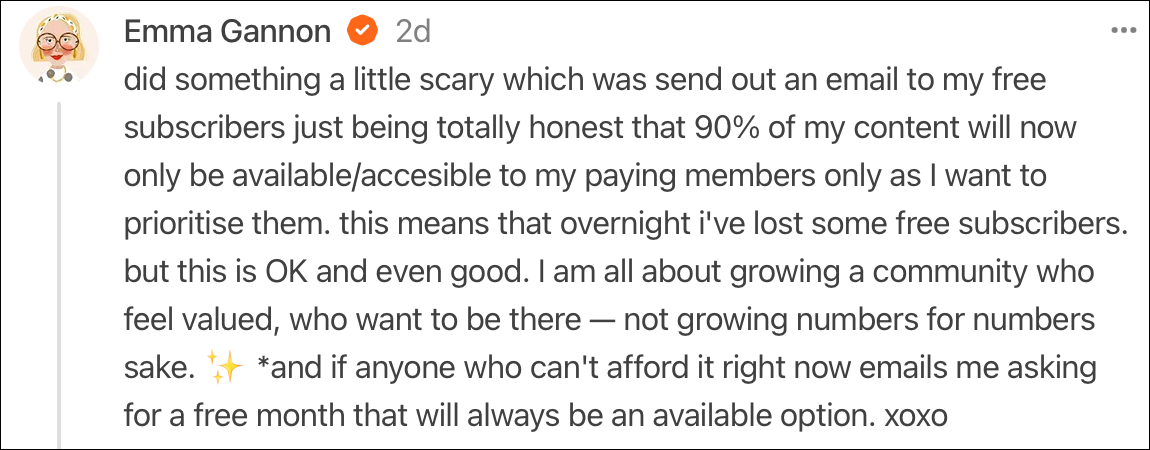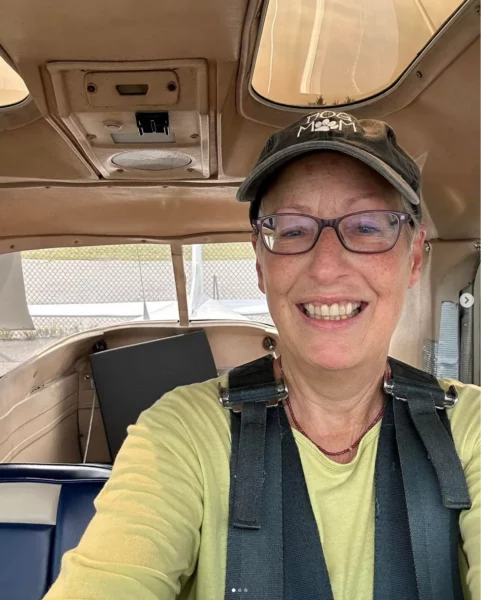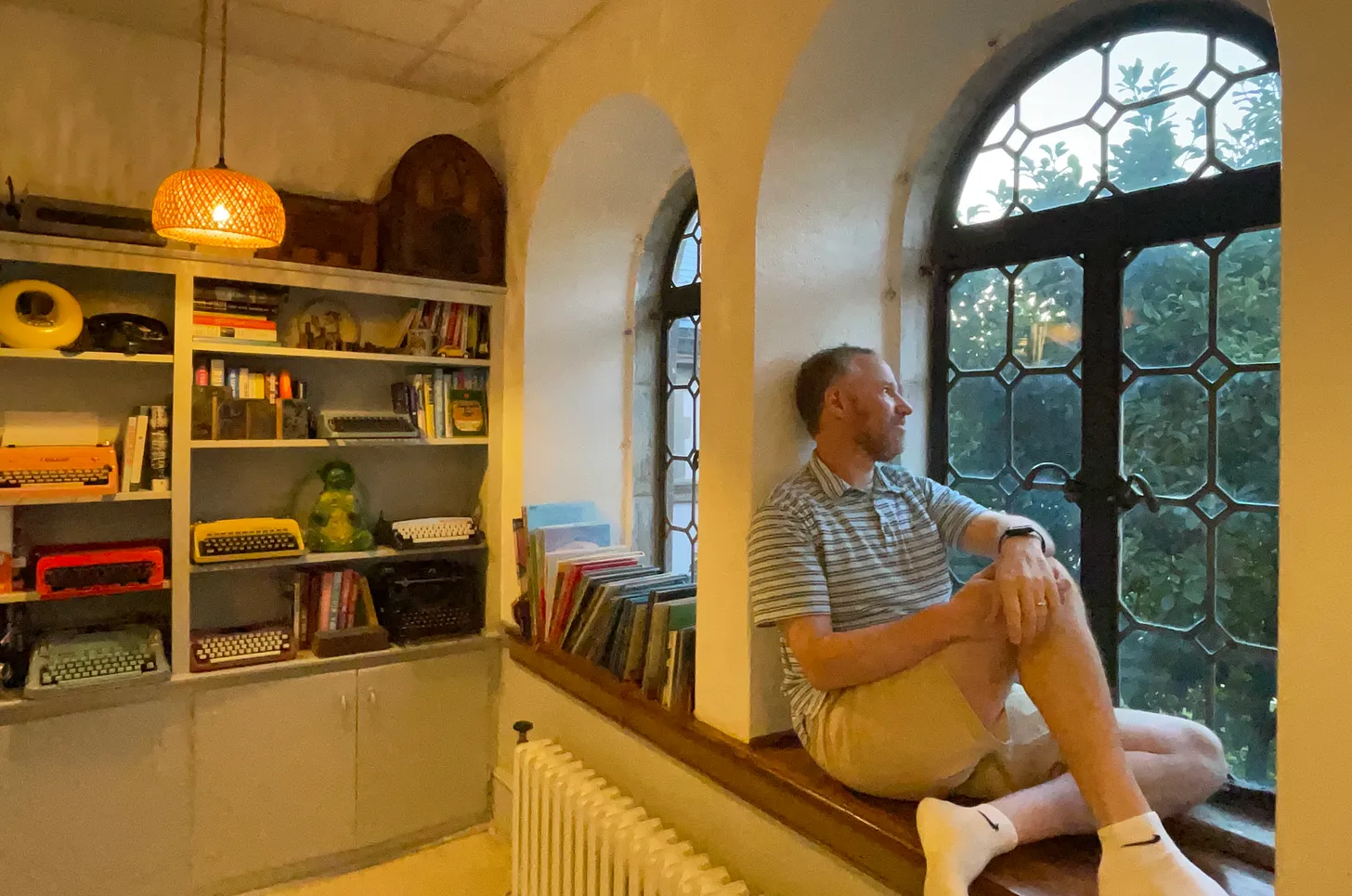If you are afraid of sharing your writing, you may need to hear this:
- There has never been a better time to be a writer. The world has never been more open to hearing a wide range of ideas & stories, and embracing the voice of each individual — including you!
- There have never been more options for how to publish and share what you create.
- You have so much power, permission, and access to people than writers years ago would have been able to dream of.
I grew up as the art kid, and my entire life has been filled with writers, artists, performers, and creators of all types. My full-time job for the past 13 years has been helping writers reach their readers. Today I want to share why I am so enthusiastic about your ability to create and share — all in a manner that feels authentic to who you are.
But more importantly: this is your time to share your voice, to let your creative vision develop, and fill your life with people who appreciate the themes you write about. I mean, wouldn’t it be amazing to immerse yourself in creativity and experiences around that?
Let’s dig in…
The Way It Used to Be – Always Asking Permission
Have you ever felt like you needed to ask permission in order to create, publish, or share your work? Have you sensed that your writing could only be validated and seen by others if you first worked through a complicated system of gatekeepers who have the authority to let you through or deny you entry, explaining to you that “you aren’t ready yet?”
That is the way it used to be, where you had only one option. A situation where an individual felt locked out of creating, publishing, and sharing unless first being chosen by someone in a position of authority.
Back in 2017, I published my book, Be the Gateway, which helps writers and creators consider how sharing their creative work should be a fulfilling process of connecting people to writing, art, and each other. It’s funny, even now I’m understanding the metaphor of the title more and more. Just this week, a writer shared this photo of my book, filled with post-it notes as reminders of sections she wanted to go back to:
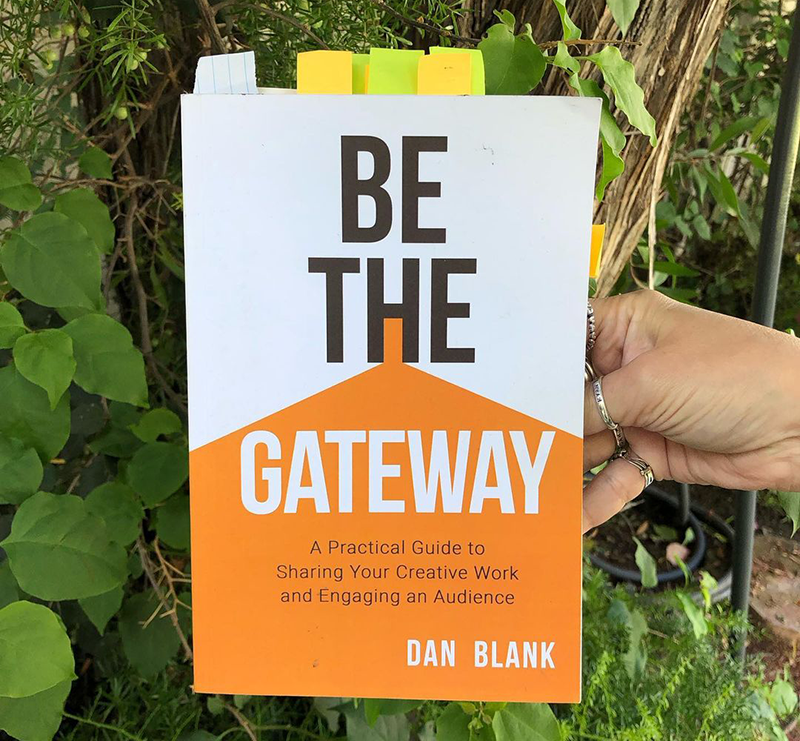
(thank you Wendy Kennar!)
You are a gateway. You don’t need any gatekeepers to allow you to cross the threshold to creativity and sharing what you create.
Now, I want to be clear: I am not implying that gatekeepers are bad. In fact, they are often wonderful supporters of creative work, doing an impossibly difficult job of having to select a tiny fraction of work that they love to support. And for many of them, they have also become educators in the marketplace, trying to help the writers and creators that they can’t actively work with by teaching them skills and wisdom.
Working with these supportive partners is still an a wonderful path that you can take. But you have other options today that writers years ago didn’t.
It is not uncommon for a writer to express to me that they feel they need a credential in order to write. That they need to sign up for a program, take a course, get a degree, be selected by a notable place or person, or win an award before they write their novel, memoir, or nonfiction book. And while those are realistic paths, you don’t need to do them. You can… just write. Period.
Can you — and should you — also edit? Oh yes. Copiously, and sometimes painfully.
Can you work with a support system in that process? Yep. Writing partners, writing groups, or hiring editors, book coaches, or others.
But you don’t need someone’s permission to write. You can just do it. Might it feel better to have a fancy degree hanging on your wall? Perhaps. Sometimes that makes light conversation at a backyard barbecue feel easier. Think of these two scenarios:
That neighbor who never approved of you: “Oh so I hear you are writing now…”
You: “Um yes, I’m writing a memoir.”
The neighbor: (with a judging sideways glance) “Oh. How lovely… let me know how that works out for you. Can you pass the potatoes?”
Vs.
That neighbor who never approved of you: “Oh so I hear you are writing now…”
You: “Yes, I just received my MFA from (super impressive sounding) University. It was an intensive two-year program, and one of my mentors was (well-known and respected author).”
But here’s the thing… that neighbor’s reply will still remain the same:
The neighbor: (with a judging sideways glance) “Oh. How lovely… let me know how that works out for you. Can you pass the potatoes?”
If you want to study writing — great! Go for it! But do it because it aligns with your learning style, and because you want to embrace the craft of writing in that specific manner. Not because you feel the credential will somehow give you validation and permission. Find the path that feels right to you, and fills your life with people who you feel are supporting what you do.
Likewise, many writers feel that they need permission to publish. So many people over the years have told me that their plan is: “Well, Plan A is to query agents and get a traditional publisher. If that doesn’t work, Plan B is self-publishing.”
Each writer can have different reasons for following that progression. I simply want to encourage you to reflect on whether you are seeking a path because you feel you need to be chosen by others, and if you will truly forge your own path if you aren’t. My biggest fear in this scenario is someone not landing an agent or publisher, and then… never publishing, never sharing their writing, and then… stopping writing altogether.
Last week I shared a case study of how Breanne Randall spent a year querying agents, and found hers at the 54th pitch. (This week, she announced that her book hit the New York Times bestseller list, as well as the USA Today bestseller list!) I have profiled other authors who found their agent after 70, 80, or more queries. Or those who only found their agent or publisher on their third manuscript, after being unable to sign with an agent with two previous book ideas.
If that path feels right to you, pursue it. My point is that this is not the only path anymore.
When it comes to sharing what we write, years ago authors had fewer options. They had to rely mostly on big media, prominent reviewers, and avenues where the system was slow and exclusive. While most of those opportunities still exist in some form, there are now many more ways that each writer can share their writing by themselves. This may include email newsletters, online communities, direct outreach, social media, events, and so much more.
Do some writers roll their eyes at this, bemoaning this as an unwanted responsibility? Of course, and I have empathy for that. But what I always consider is this: the person sitting alone in their home, desperately wanting their writing to be seen, wanting to feel that they had agency to connect with others who care about the themes they write about. Today, that person has options that didn’t exist 15 or 20 years ago.
This can apply to how they publish (traditional, hybrid, self-publishing, micro-publishing, etc.) But it also applies to their ability to share their work, to email people, to pitch themselves as guests on podcasts, to join groups, to develop colleagues, and of course, to engage with readers.
Is this “work?” If you want it to be. But these are options that I didn’t have in 1993 as I sat alone in my room with nothing more than a phone to reach out to people far away (paying long distance fees), snail mail, the bulletin board at the local cafe, and the information a reference librarian could give me about how to “break in” to publishing. I didn’t want to “break in” like there is some invisible threshold that a select few get to cross. I just wanted to have a life filled with meaningful moments around the writing, art, themes I cared about, with people who cared about these things as well.
It Used to Be Expensive to Get Seen (And Even Then, it was Fickle)
I’ve shared the story of how I ran a music fanzine decades ago, self-publishing my own magazine where I was able to interview bands such as Oasis, Weezer, Cowboy Junkies, Blur, Stereolab, They Might Be Giants, and so many others.
Do you know a primary way that bands were able to try to reach a writer like me back then? Press kits. I would get so many of these in the mail, vying for my attention: a press release, glossy photo, and photocopies of reviews from other magazines:
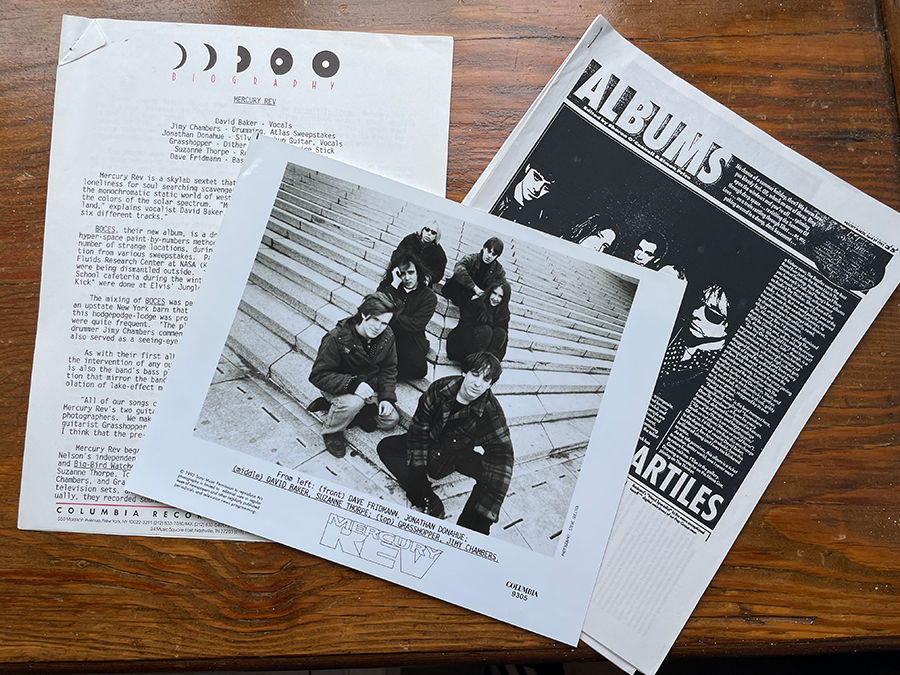
Just think of how expensive these were to create and distribute. A band likely would have sold away the rights to their music in order to get on a record label so that they could pay for production, distribution, and publicity through press kits like this and other means.
What did I do with most of these press kits? A quick glance, then thrown in a box.
Likewise, I would receive free tapes, records, and CDs in the mail. I would give a cursory listen to all of them, but in reality, there were more prominent bands that already focused so much of my attention. I would be offered free concert tickets, but again, I was really only interested in bands I had heard of already, and who were getting buzz through other channels.
Were there bands I discovered and enjoyed whose tapes I was sent? Absolutely. The big “win” for them was me writing a 3 paragraph album review in my poorly distributed fanzine. All that effort — all that money, all those hours from the record label — for this tiny mention.
Writers and creators today may share on Substack or social media, and worry that something they shared “only” got 2 likes, or “only” received 1 comment. But that is already so much more than these bands received back in the early 1990s, from a much bigger effort. This is an effort they didn’t control, and if the label dropped them, they lost their ability to reach people like me, even in this fickle manner.
Is it okay for you to not engage in social media, not have a newsletter, not share your writing or creative work at all? Yes, of course. You don’t have to do any of this. You get to choose. You can just write. And I love that you have that choice.
But I always consider that moment when someone wants to feel they have options, that they have the ability to connect with others, to share their work without asking, and to connect with real people in the process. You have options.
You No Longer Have to Recreate the Wheel
One of the most powerful aspects of the tools that writers and creators have is the “follow” and “subscribe” buttons. What do these represent? Someone being able to join you on your creative journey, even between books or projects.
This is important because years ago, a writer may have gotten publicity for one book, but then there would be silence between books. To re-engage their existing readers, they had to hope to get another book deal, hope to get reviewed in a prominent publication, hope to get chosen to be featured in a big literary festival.
With every book, they had to start fresh in reaching their audience.
But now we have Substack, Patreon, social media, events, email, and so much else to stay connected with readers. You can build upon past success more easily, and stay connected with people before/during/after you share your writing.
This is the best time to be a writer. Does that mean that everything is perfect? Of course not. In particular, I feel that AI is going to radically change the marketplace around writing and creative work. Every week there are new headlines about how that is reshaping industries, including publishing.
Yet every day I see writers connecting with readers in powerful ways. And I am reminded: this is a deep human need, and one that will not go away anytime soon.
My family has been to the New York State Renaissance Faire many times. The first time I was there, I noticed this little semi-circle of benches off to the side in a patch of the woods. In the center was a storyteller. Just a guy with a booming voice, telling old-fashioned stories.
I was transfixed.
I sat there, listening to stories, as did many others. And every year we went back, I made sure we had time to sit in that little alcove of trees to listen to stories.
If you have a story inside of you, I encourage you to develop it. To publish it. To share it.
Thank you.
-Dan

